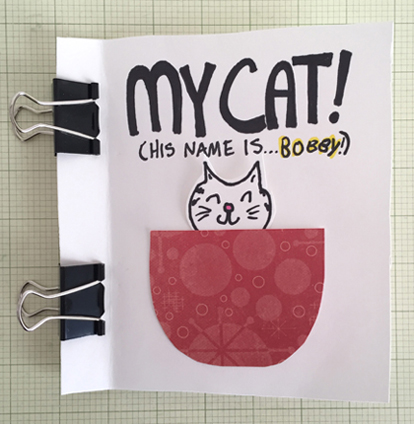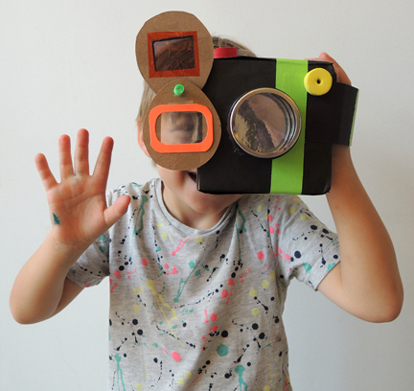
Since childhood, there have been a few craft projects that have proved elusive to fabrication…umbrellas that stay open, a conveyer belt that moves, and life-sized fake cotton candy that still looks yummy. The cotton candy is ESPECIALLY difficult. Tulle fabric looks weird, and cotton balls just clump! They. Just. Clump.
Cameras used to be one of those elusive craft projects, but I’m happy to report that we’ve managed to create several fun versions complete with lenses, shutter clicks, and Polaroids! So today, in honor of National Camera Day, we will be sharing our favorite camera projects. Starting with the one pictured above. A handheld camera with color changing lenses!
Shutter clicks go hand in hand with camera, be they physical or digital. I never was able to quite nail the sound until I stumbled upon these bug clickers. They really add dimension to this snazzy tea tin camera, modeled here by a penguin…
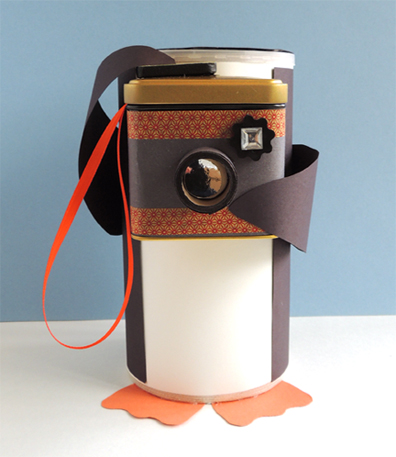
Polaroid cameras were a thing of my youth, and attempts to recreate them were met with various degrees of success. I felt I reached my zenith, however, with this OCuSOFT box turned Polaroid camera. We also turned the photos into a nifty little story time matching game!
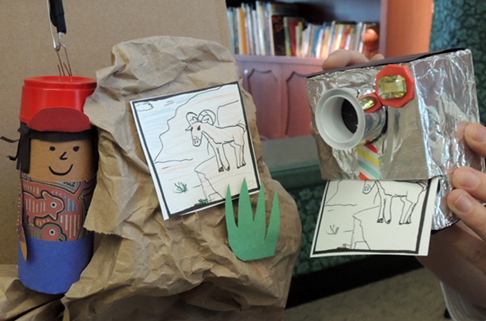
Finally, go BIG with an entire film crew, complete with handheld mic, camera, and a boom mic! We’veve used this set up a number of times (from science interviews to cooking shows), and it’s always fab-u-lous!
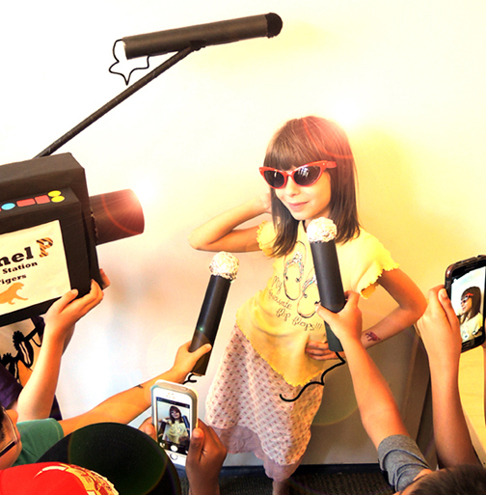

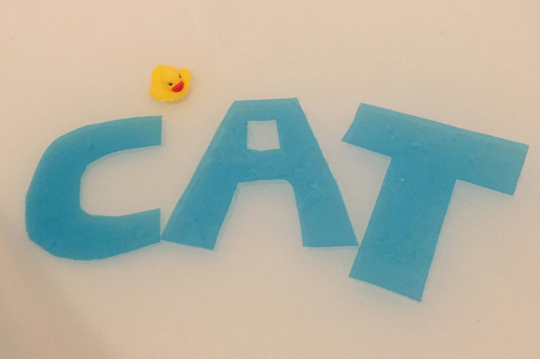
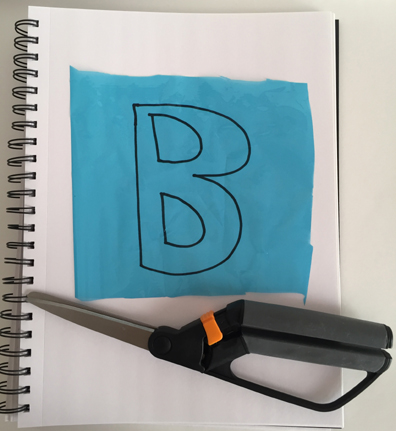
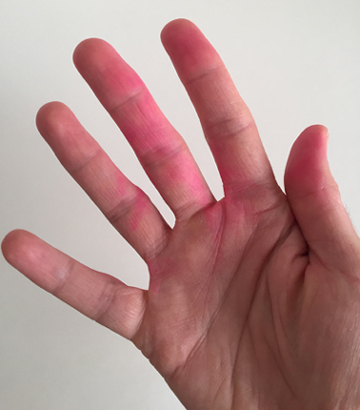
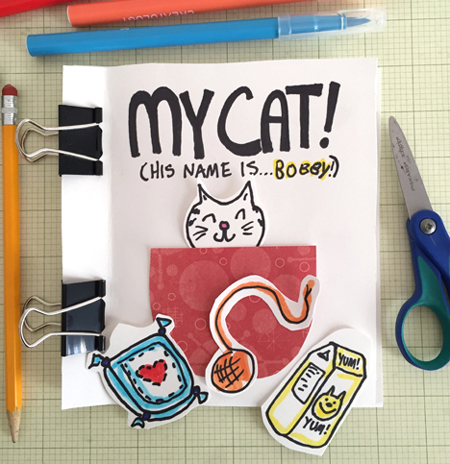
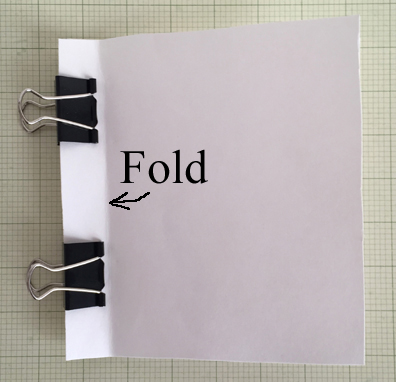
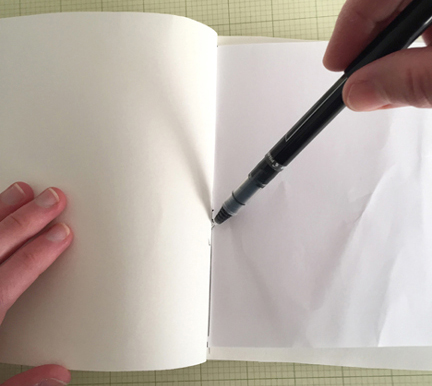 Then disasseble the book, and give your artist the flat marked pages to decorate!
Then disasseble the book, and give your artist the flat marked pages to decorate!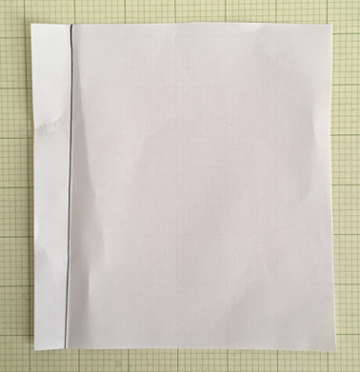
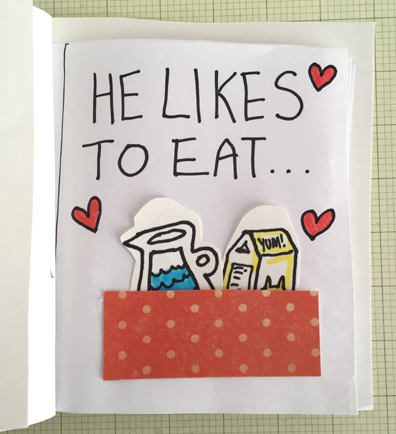 I used a heavier patterned cardstock for the pockets, but plain poster board, construction paper, or regular printer paper works too! However, when it comes to the objects in the pockets, definitely use poster board. It’s sturdier, can hold up to lots of handling, and easier to push in and out of the pockets. For fun, try doubling the pockets per page!
I used a heavier patterned cardstock for the pockets, but plain poster board, construction paper, or regular printer paper works too! However, when it comes to the objects in the pockets, definitely use poster board. It’s sturdier, can hold up to lots of handling, and easier to push in and out of the pockets. For fun, try doubling the pockets per page!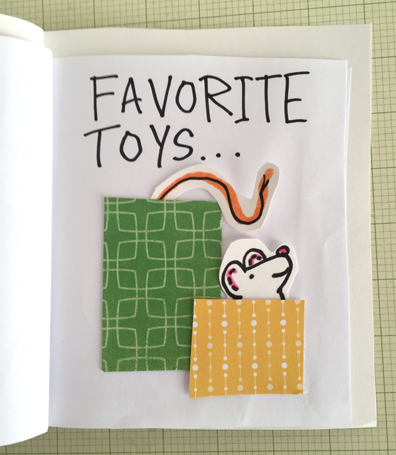 When the pages are complete, reassemble the book and enjoy! I recommend whipping up a batch of blank books at one time, just in case your first book expands into an epic series.
When the pages are complete, reassemble the book and enjoy! I recommend whipping up a batch of blank books at one time, just in case your first book expands into an epic series.